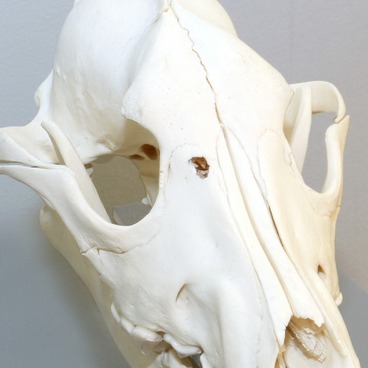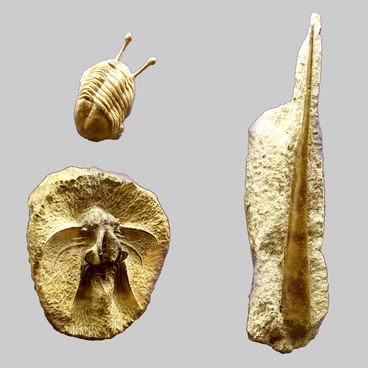This lower jaw fragment from a woolly mammoth was discovered in the village of Lugovskoye, in the outskirts of Khanty-Mansiysk. More than 11,000 years ago, herds of woolly mammoths roamed this territory. They were attracted by the local salt licks for animals, which were mineral complexes important for the functioning of animals’ bodies. In search of salt licks, mammoths wandered onto unsteady clay soils and fell into natural traps.
And now doing research in Lugovskoye is very difficult: the conditions are suitable for work for only one month each year. Nevertheless, paleontologists from the Museum of Nature and Man have been working here since the late 1990s. While studying the location, it was possible to collect more than 6,500 bone fragments from woolly mammoths. They will allow gaining a better understanding of these extinct giants from the Russian Far North.
This jaw fragment contains the teeth of one prehistoric animal while they were being replaced. Mammoths lived an average of 45 years, and changed their sets of teeth six times during that period. There were 6 teeth in a mammoth’s jaw: 4 teeth for chewing - 2 each in the lower and upper jaws - and a pair of very overgrown incisors, the tusks. Mammoths were born with baby teeth, including tusks, and then changed those out for permanent ones. During the process of changing teeth, the younger tooth ‘swam up’ out of the root canal and onto the old one. During these transitional periods, the mammoth’s jaw could contain up to 8 teeth for chewing at the same time. By the age of 20, the process of teeth replacement was over, and mammoths used their permanent teeth for the rest of their lives. The number and condition of the teeth is one of the factors that determines the age of a particular individual.
Mammoths’ chewing teeth had a heterogeneous, ribbed structure with alternating bone tissue and enamel. Their rough surface made it possible to grind with equal ease both juicy grasses and shrub branches, which constituted the main food for prehistoric elephants. Judging by the remains of plants found among the teeth and in the stomachs of mammoths, it is possible to establish that they ate various grains, stems, and leaves of sedges, and shoots of willow, birch, alder, lingonberry, peat moss, and reeds. Mammoths did not shy away from eating the twigs of coniferous plants like pine and larch. According to scientists, a mammoth needed to eat from 200 to 300 kilograms of food per day, and only their extraordinary teeth could cope with so much tough food.
And now doing research in Lugovskoye is very difficult: the conditions are suitable for work for only one month each year. Nevertheless, paleontologists from the Museum of Nature and Man have been working here since the late 1990s. While studying the location, it was possible to collect more than 6,500 bone fragments from woolly mammoths. They will allow gaining a better understanding of these extinct giants from the Russian Far North.
This jaw fragment contains the teeth of one prehistoric animal while they were being replaced. Mammoths lived an average of 45 years, and changed their sets of teeth six times during that period. There were 6 teeth in a mammoth’s jaw: 4 teeth for chewing - 2 each in the lower and upper jaws - and a pair of very overgrown incisors, the tusks. Mammoths were born with baby teeth, including tusks, and then changed those out for permanent ones. During the process of changing teeth, the younger tooth ‘swam up’ out of the root canal and onto the old one. During these transitional periods, the mammoth’s jaw could contain up to 8 teeth for chewing at the same time. By the age of 20, the process of teeth replacement was over, and mammoths used their permanent teeth for the rest of their lives. The number and condition of the teeth is one of the factors that determines the age of a particular individual.
Mammoths’ chewing teeth had a heterogeneous, ribbed structure with alternating bone tissue and enamel. Their rough surface made it possible to grind with equal ease both juicy grasses and shrub branches, which constituted the main food for prehistoric elephants. Judging by the remains of plants found among the teeth and in the stomachs of mammoths, it is possible to establish that they ate various grains, stems, and leaves of sedges, and shoots of willow, birch, alder, lingonberry, peat moss, and reeds. Mammoths did not shy away from eating the twigs of coniferous plants like pine and larch. According to scientists, a mammoth needed to eat from 200 to 300 kilograms of food per day, and only their extraordinary teeth could cope with so much tough food.



